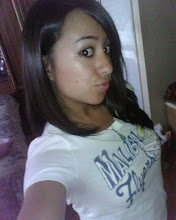This article explains the overview, theories, and origins of the word cool. It also shows what is cool in different regions of the world. Along with giving a reason why the word cool has no meaning or definite definition, the article explains what goes into being or making someone cool.
This article bought up a very good point about the word cool, one that I have not heard before reading this article. Stated is the fact that cool does not have a meaning or definition because of the constant evolution of what cool is. This article explains what goes into being cool, and gives the generic normal answers, but then explains that cool changed per decade/new fad, which is an interesting point.
Fenichel, Michael. "What is "Cool"? (What's Hot? What's Not?)." Dr. Michael Fenichel's Teaching Tools. 2008. Wikimedia Foundation, Web. 5 Dec 2009.
What is cool? This article works to explain what cool is (according to children and teenagers), and then incorporates the author’s point of view’s on what cool is. This article ties together self-esteem, peer pressure, and social experiences, to name a few, with the word and definition of cool. On the bottom are interviews the author had with girls and boys about what cool is.
An interesting point that this article brought up that has not been brought up by other sites I visited or people I spoke to was the fact that peer pressure and self-esteem played a big role in being cool. Yes we did touch on the fact that being cool involves being popular or being liked, and having confidence in one’s self, but we never explained how it impacted people with low self-esteem, or how people feel pressure to be cool.
Buehler, Doyle. "You're not cool - I am. What is cool & finding the cool factor. ." Fast Company July 24. 2008: n. pag. Web. 5 Dec 2009.
This article is extremely interesting on two different levels. First, the author perceives himself as cool and likes to say that he is cool than anyone else reading this article. He then explains why and how he perceives himself as cool. The second interesting thing he does is he gives a formula or breakdown for how one can become cool. In this formula, the biggest slice or variable is what people think about you, taking up 99% of the 100% the formula adds up to. This seems rather true. The author then explains that there is no universal definition of cool; it’s all up to a person’s point of view or perception.
Like I said before, the interesting point of this article was the formula to be cool. This can definitely be used as an argument in a paper or in a discussion, or as steps to how people can become cool. The author also brought corporate companies into the article, which also can be used in an argument.

No comments:
Post a Comment